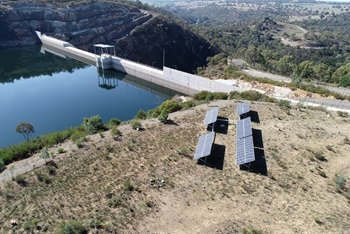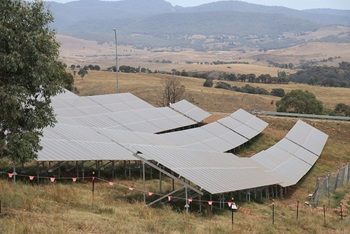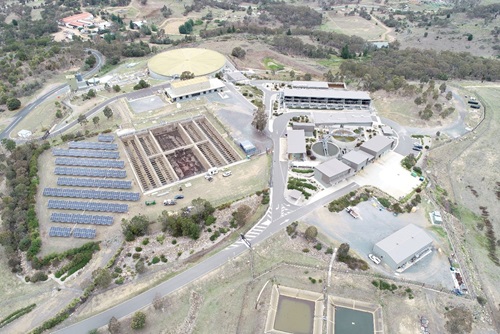Carbon and energy
Delivering water and sewerage services is energy intensive. We are constantly looking at ways to reduce energy consumption, reduce the generation of greenhouse gas emissions and build resilience against climate change.
Energy Management
We are committed to reducing both energy use and carbon emissions.
Our forebears constructed Bendora and Corin Dams so that water from these reservoirs flows into our Stromlo water treatment plant under gravity without the need for pumping and we generate energy from mini hydro and solar PV systems across several locations. We also recover heat from organic material back into the wastewater treatment plant to reduce our footprint and return nutrients to local agriculture as AgriAsh. We always evaluate the sustainability of our infrastructure investment projects to drive resource efficiency.
Our Energy Management Strategy acts on the growing global movement towards taking meaningful action on climate change by reducing our energy use from high carbon sources and increasing our focus on renewable energy generation.
The strategy seeks to manage and control energy-related costs and emissions and generate operational efficiencies over the short term by 30 June 2023, by adopting four approaches;
- Through stakeholder engagement
- Having an energy management system
- Realising energy and emission opportunities
- Future planning and preparedness
Solar photovoltaic
Icon Water has been rolling out solar PV at multiple sites: Lower Molonglo Water Quality Control Centre (LMWQCC), Mitchell Office, Cotter Dam and Stromlo Water Treatment Plant (SWTP). These provide 720 kW of renewable electricity. This list continues to grow as Icon Water expands its renewable energy portfolio.
 |  |
These new systems provide both financial and climate related benefits. Going forward, they will lower our electricity bills through reducing use and demand charges, particularly during peak tariff periods.

Having onsite renewable energy sources supports both climate change mitigation and adaptation. They support our energy resilience, as it becomes more important in managing risks related to climate change. Generating renewable energy also supports decarbonisation in our region.
Mini-hydros
Hydro is the largest contributor to renewable generation in Australia. We have four mini-hydro electricity generators - Bendora Dam, Stromlo Water Treatment Plant, Googong Dam, and at the outlet of the Murrumbidgee to Googong (M2G) pipeline at the discharge point to Burra Creek.
These mini-hydros reduce electricity costs and the need for fossil fuel generators.
- More on the Googong Dam Mini Hydro (or download the Googong Dam Mini Hydro factsheet)
- More on the Mount Stromlo Mini Hydro (or download the Mount Stromlo Mini Hydro factsheet)
Carbon Reduction and Offsets
Today, our greenhouse gas emissions represent a little over one percent of the ACT’s total emissions.
We follow the carbon hierarchy involving avoidance, efficiency, substitution and carbon offsetting as the overarching framework to reduce emissions.
A key initiative that we have introduced to offset our greenhouse gas emissions involved securing approximately 400,000 tonnes of carbon sink forestry offsets in New South Wales and Western Australia which help sequester carbon.
| Discover your carbon footprint! Explore how your lifestyle contributes to greenhouse gas (GHG) emissions. By using this calculator you can learn how you can do your bit to reduce your own carbon footprint. What does it tell me? Your results are based on a set of assumptions to give an indication on how your lifestyle choices affect the world around you. The key message is “How can I bring this number down?” The ‘number of earths’ reflects what would be required if everyone lived your lifestyle. The average number of earths in Australia is 4.07. What now? We all have a role to play to ensure our carbon footprints are as low as possible. What commitments can you make both in your home, school or workplace to create a more sustainable environment? |
